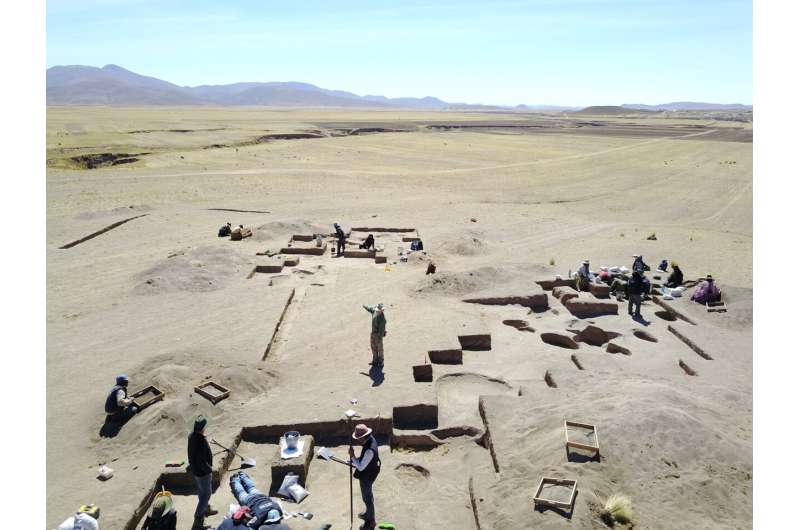This article has been reviewed according to Science X's editorial process and policies. Editors have highlighted the following attributes while ensuring the content's credibility:
fact-checked
peer-reviewed publication
trusted source
proofread
New research challenges hunter-gatherer narrative

The oft-used description of early humans as "hunter-gatherers" should be changed to "gatherer-hunters," at least in the Andes of South America, according to groundbreaking research led by a University of Wyoming archaeologist.
Archaeologists long thought that early human diets were meat-based. However, Assistant Professor Randy Haas' analysis of the remains of 24 individuals from the Wilamaya Patjxa and Soro Mik'aya Patjxa burial sites in Peru shows that early human diets in the Andes Mountains were composed of 80% plant matter and 20% meat.
The study, titled "Stable isotope chemistry reveals plant-dominant diet among early foragers on the Andean Altiplano," has been published in PLOS ONE. It applies methods in isotope chemistry and statistical modeling to unveil a surprising twist in early Andean societies and traditional hunter-gatherer narratives.
"Conventional wisdom holds that early human economies focused on hunting—an idea that has led to a number of high-protein dietary fads such as the Paleodiet," Haas says.
For these early humans of the Andes, spanning from 9,000 to 6,500 years ago, there is indeed evidence that hunting of large mammals provided some of their diets. But the new analysis of the isotopic composition of the human bones shows that plant foods made up the majority of individual diets, with meat playing a secondary role.
Additionally, burnt plant remains from the sites and distinct dental-wear patterns on the individuals' upper incisors indicate that tubers—or plants that grow underground, such as potatoes—likely were the most prominent subsistence resource.
"Our combination of isotope chemistry, paleoethnobotanical and zooarchaeological methods offers the clearest and most accurate picture of early Andean diets to date," Haas says. "These findings update our understanding of earliest forager economies and the pathway to agricultural economies in the Andean highlands."
Joining Haas in the study were researchers from Penn State University, the University of California-Merced, the University of California-Davis, Binghamton University, the University of Arizona and the National Register of Peruvian Archaeologists.
Undergraduate students also had the opportunity to conduct research during the initial 2018 excavations at the Wilamaya Patjxa burial site.
Currently a Ph.D. student in anthropology at Penn State University, Jennifer Chen, the journal article's lead author and a former undergraduate student in Haas' research lab, performed the isotope lab work and much of the isotope analysis following the excavations.
"Food is incredibly important and crucial for survival, especially in high-altitude environments like the Andes," Chen says. "A lot of archaeological frameworks on hunter-gatherers, or foragers, center on hunting and meat-heavy diets—but we are finding that early hunter-gatherers in the Andes were mostly eating plant foods like wild tubers."
Haas notes that archaeologists now have the tools to understand early human diets, and their results are not what they anticipated. This case study demonstrates for the first time that early human economies, in at least one part of the world, were plant-based.
"Given that archaeological biases have long misled archaeologists—myself included—in the Andes, it is likely that future isotopic research in other parts of the world will similarly show that archaeologists have also gotten it wrong elsewhere," he says.
Haas investigates human behavior in forager societies of the past to better understand human behavior in the present. He leads archaeological excavations and survey projects in the Andes and mountain regions of western North America.
More information: Stable isotope chemistry reveals plant-dominant diet among early foragers on the Andean Altiplano, PLoS ONE (2024). DOI: 10.1371/journal.pone.0296420
Journal information: PLoS ONE
Provided by University of Wyoming



















